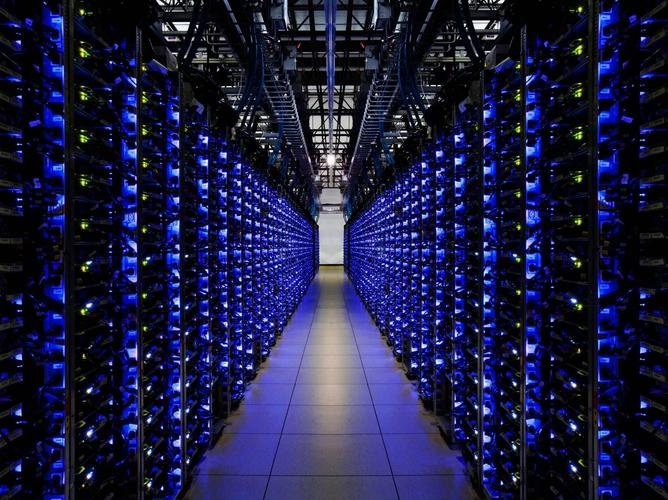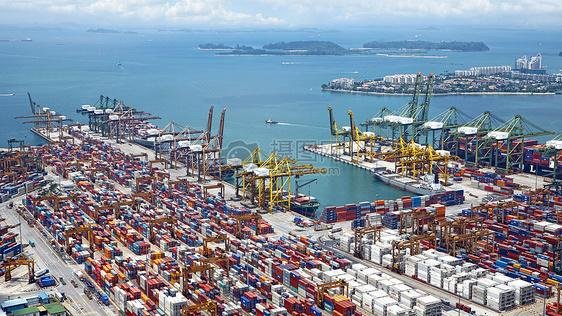Data Centres (Shaoguan)
Shaoguan in Guangdong is in the process of being one of the data centre in China. Shaoguan is located in the northern mountainous region of Guangdong, with a relatively lower average temperature, making it the lowest in annual average temperature in the entire Guangdong province. It is less affected by typhoons, not susceptible to coastal erosion, and falls into a low disaster risk area, making it conducive to the safe and reliable operation of data centers. Additionally, Shaoguan is one of the major electricity and energy bases in Guangdong, offering the lowest industrial electricity prices in the province. In terms of network resources, Shaoguan is a crucial node for the national fiber-optic first-level network connecting Beijing to the Guangdong-Hong Kong-Macao Greater Bay Area (Guangzhou). Regarding industrial infrastructure, Shaoguan hosts the provincial-level Big Data Industrial Park known as "South China Data Valley," which has attracted projects such as the Huashao Data Valley and China Unicom's Southern Intelligent Customer Service Center, establishing a strong foundation for the big data industry.
As part of the national strategy for the Guangdong-Hong Kong-Macao Greater Bay Area, there are plans to establish a three-tiered data center spatial layout structure, including the Shaoguan Data Center Cluster as a national backbone network hub node, making it one of the ten national data center clusters in the country. The Shaoguan Data Center Cluster will actively accommodate real-time computing needs from cities like Guangzhou and Shenzhen, encouraging the migration of warm and cold businesses to the western region. According to the plan, by 2025, the Shaoguan Data Center Cluster aims to have 500,000 standard server racks, a scale of 5 million servers, an investment exceeding 50 billion yuan, and it will strongly drive the formation of a data industry ecosystem in Shaoguan, creating a billion-dollar electronic information and big data industry cluster while exploring the "East Data, West Computing" Shaoguan model.
Offshore and Onshore Warehouses (Hong Kong & Macao)
Fintech & AI
Ports
Yantian Port, a world-class natural deepwater harbor, is the largest single-container terminal in the world. It handles over one-third of Guangdong Province's foreign trade imports and exports and more than one-fourth of the cargo volume for China-US trade. Yantian Port boasts 15 e-commerce shipping routes, making it a hub with significant advantages in port infrastructure and warehousing resources for cross-border e-commerce business.
Currently, Yantian District is actively developing its core area as a global maritime center city and the Shatoujiao International Tourism and Consumption Cooperation Zone. Yantian Port, known as the "Preferred Port for Cross-border E-commerce," plays a key role in the development of the maritime center city and provides strong support for the growth of cross-border e-commerce. It offers a stable channel and high-quality services for e-commerce companies looking to expand globally. The "Cooperation Zone" focuses on developing "international tourism consumption" and leverages the unique geographical advantages and cross-border consumption potential of Chung Ying Street, making it fertile ground for the development of cross-border e-commerce.
Shenzhen has become the hub of cross-border e-commerce due to its convenient transportation and abundant supply chains. According to statistics from the Shenzhen Cross-Border E-commerce Industry Association, 70% of cross-border e-commerce companies in China are located in South China, and 80% of them are in Shenzhen. It's estimated that Shenzhen is home to over 150,000 small and medium-sized cross-border e-commerce sellers, accounting for a significant portion of China's cross-border e-commerce market. They work around the clock, 365 days a year, to export Chinese products to the world. Recently, the international shipping hub, and the world's largest single-container terminal, Shenzhen Yantian Port, welcomed the maiden voyage of the Evergreen Marine's "Ever Aria" vessel. This vessel is currently the largest container ship in terms of carrying capacity globally. Yantian Port serves as the homeport for 100% of the world's largest container vessels, and it has also attracted numerous shipping companies to use it as the final port of call for European and American routes, as well as a port of call for intra-Asian routes.
Recycling & Sustainable Packaging (Dongguan)
Jazz & Hip-hop
Films & Live streaming
Guangdong ranked the highest in the filming industry in terms of average box-office receipts and occupations rates in cinemas. This region has intensive interaction in the filming making ecosystem in term of filming crews, filming places, and directors and cinemas. For example, Hong Kong has one of the largest and most dynamic film industries in the world. As a major centre for the production of film and television content, the city has captured a fair share of the regional market, particularly in mainland China. Shenzhen is also the birthplace of sci-fic movies in China.
Guangdong is at the forefront of the digital era in emerging fields such as internet communication, artificial intelligence, big data, virtual reality, and the "metaverse." It boasts major internet giants like Tencent, NetEase, and Kugou, as well as top-tier animation production companies like Yongsheng, Huaqiang Fantawild, and Universal Digital. Guangdong is home to 7 of the top 50 VR companies in China and has 7 of the nation's 4K high-definition channels, holding a significant presence in these areas.
Firstly, Guangdong boasts the largest film and television market in the country, with enormous potential. Guangdong has the largest film and television market as well as the largest market for Cantonese-language products in China, holding the top positions in both national box office revenue and the number of screens for 20 consecutive years. During the recent National Day holiday, the comprehensive box office revenue in Guangdong province exceeded 1.84 billion yuan, accounting for approximately 13% of the national box office revenue. Since the 1990s, the former State Administration of Radio, Film, and Television has approved the landing of nine overseas television channels in Guangdong, including Hong Kong, Jade, Pearl, International, Phoenix, Huayu, Aoye, Star TV, and MTV. Until 2003, the market share of overseas channels was leading over local television. According to data released by the National Bureau of Statistics for the first half of 2022, the per capita disposable income of urban residents in Guangdong is around 30,000 yuan, while in Guangzhou, it's approximately 41,000 yuan, and in Shenzhen, the per capita disposable income of residents is 37,731 yuan, all significantly higher than the national average of 18,463 yuan.
In 2021, Guangdong's digital economy reached a scale of 5.9 trillion yuan, maintaining its position as the national leader for five consecutive years, with a digital industrialization scale of 1.9 trillion yuan. This indicates that Guangdong has a strong advantage in emerging industries and can provide substantial support to the film and television industry in the Greater Bay Area, keeping pace with the cutting-edge trends of the era.
Higher Education (Hong Kong & Shenzhen & Guangzhou)
Shenzhen is rapidly bridging the gap in higher education and innovation compared to other cities through the establishment of the Shenzhen Virtual University Park. Over its 23-year existence, the Shenzhen Virtual University Park has consistently promoted the integration of top domestic and international universities with Shenzhen's technological innovation. It has gathered 68 renowned institutions from both China and abroad, including Tsinghua University, the University of Hong Kong, and the Georgia Institute of Technology. Among them, 11 are ranked in the top 100 by QS, 30 are key domestic universities (985 universities), 6 are from Hong Kong, and 8 are from foreign countries.
The park has also established 78 innovative platforms such as municipal-level or higher-level key laboratories and engineering laboratories. It has incubated more than 1,700 technology companies to date and trained over 445,000 talents across various fields, forming a relatively comprehensive talent development system. Furthermore, it has undertaken nearly 5,200 research projects and achieved approximately 2,600 research outcomes.




